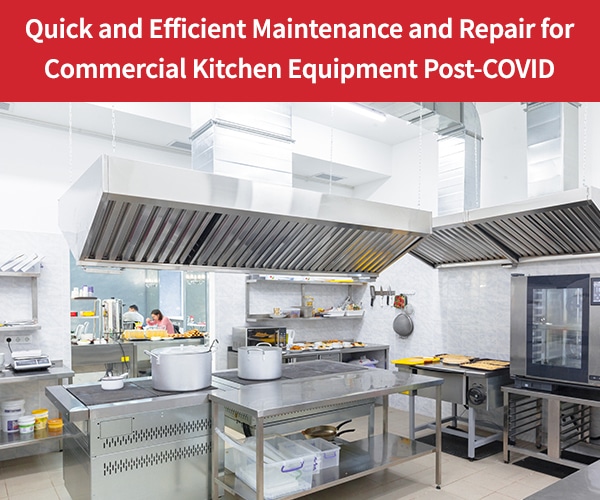
- Field Service Management
- Optimization
- Productivity
The 7 challenges of successful field service management
From technician schedules to integration with the enterprise information system, field service management solutions must deliver the capabilities needed to achieve the ultimate goal: Improving customer satisfaction.
1: Customer satisfaction
Customer satisfaction encompasses all other field service management challenges in the field service industry. Whether it is the time required to solve a customer problem or the quality of the service provided, all aftermarket service activities are measured in terms of customer satisfaction. Research points to the fact that poor customer service is the main reason that customers switch service providers. According to an Aberdeen Group study, customer satisfaction (68%) is the primary measure of success in field services, far exceeding profitability (41%) and first-time fix rate (38%).
Technology is both a challenge and a solution
Living in a technology-driven world has increased customer expectations. People know what’s possible and they now expect almost flawless levels of service quality.
While technology has raised customer expectations, it can also help field service providers meet those expectations. For example, they can use field service management technology to improve internal processes and provide customers with fast, effective, and personalized service.
To improve quality of service, field service providers must be able to measure customer satisfaction. Traditionally, customers completed a paper-based survey to provide their feedback when it was time to renew their contract. Today, field service management software enables customers to provide feedback in real time so service quality can be immediately improved.
2: Paperless processes
The ability to centralize information to free time and increase field service productivity is only possible with the move to paperless processes — from the initial service request to the electronically signed electronic field service report. The need to move to paperless processes led Kiloutou, the well-known French equipment rental company, to engage Praxedo. Prior to partnering with Praxedo, Kiloutou drivers had to deal with paper documents to track equipment deliveries and pick-ups. Today, photos that confirm when equipment rentals started and ended are automatically associated with electronic files and sent to customers.
3: Efficient schedules
Properly managing technician schedules is essential to make the most efficient use of human and physical resources while keeping work hours under control. With dedicated field service scheduling software, service scheduling can be done online, making it easily accessible to technicians and their colleagues at the service center. Schedules can be quickly adapted in real-time to handle emergencies and other events for greater flexibility.
More engaged technicians
Optimized schedules also help technicians feel more motivated and valued, improving their ability to act as a brand ambassadors to your customers. All of the information they need to work autonomously and efficiently is available in their field technician mobile app. With the geolocation capabilities available in their vehicles, they’re also spending less time driving.
4: First-time fix rate
With its third-place position in the Aberdeen Group study, the first-time fix rate is clearly an important indicator for measuring service quality. The first-time fix rate directly affects how customers feel about your company. Customers are legitimately frustrated when their issue cannot be resolved on the first visit due to lack of expertise, field service management training or spare parts.
Rapid issue resolution is a win-win
When the issue can’t be resolved on the first visit, customers have to wait, hoping the next visit will result in a fix. In the meantime, the equipment failure may be causing financial losses. Your business will likely also experience financial losses due to additional field service scheduling requirements, higher fuel and operational costs, possible late penalties and lower customer satisfaction.
Field service management software can improve the first-time fix rate by addressing the root causes of delays. For example, intelligent field service scheduling capabilities ensure that a technician with the right skillset is sent to each job. If no one with the right skillset is available, training can be provided. And superior spare parts inventory management software ensures that spare parts are always available.
5: Meeting SLAs
Monitoring key performance indicators (KPIs) gives you real-time and after-the-fact insight into:
- The number of service calls that were executed, on what day and at what time
- The number of service calls that met the mean time to repair (MTTR) guarantees in service level agreements (SLAs)
- The service call duration for a particular customer compared to the average duration
Data-driven decisions
These field service KPIs metrics are instantly available with no need to contact technicians or customers, making it easy to evolve into data-driven business decisions. With field service management software, you have complete insight into field operations and can take the actions required to maintain quality of service.
6: Cutting costs and invoicing sooner
In addition to paperless processes and more efficient field service scheduling, field service management software also gives technicians important mobile capabilities.
Technicians can now use field technician mobile apps on their mobile devices to record service times, travel times, and break times. They can quickly complete electronic field service reports at the customer site with easy-to-use electronic forms that offer drop-down menus, checkboxes, and support photos and electronic signatures.
Next-day invoicing becomes possible
When your field service management software is integrated with your enterprise resource planning (ERP) or accounting software, invoices can be automatically created based on the information provided in the field.
Henry Schein France, a medical products distributor that uses the Praxedo field service management solution, has been able to reduce billing times from five weeks to less than 24 hours. Before deploying the Praxedo field service management solution, locksmith and security specialist, GOEMS, typically had to wait two weeks to have all of the information necessary to invoice customers.
7: Integration with enterprise systems
To help technicians avoid typing errors when completing electronic field service reports and electronic forms, some fields can be pre-populated with data from the enterprise information system. But, integration does not stop there. Field service management software can also interoperate with your ERP and computerized maintenance management system (CMMS) software using application programming interfaces (APIs) and web services.
Our similar articles.
-
- Productivity
- Industries
Reopening Post-COVID: Doubling Down on Maintenance of Commercial Kitchens.
June 3, 2021 -
- Field Service Management
- top trends
- Top 10
Praxedo’s Top 10 Field Service Management Articles of 2024
December 18, 2024 -
- Field Service Management
- Optimization
Top Challenges of Managing Field Service Teams Remotely
July 22, 2024


